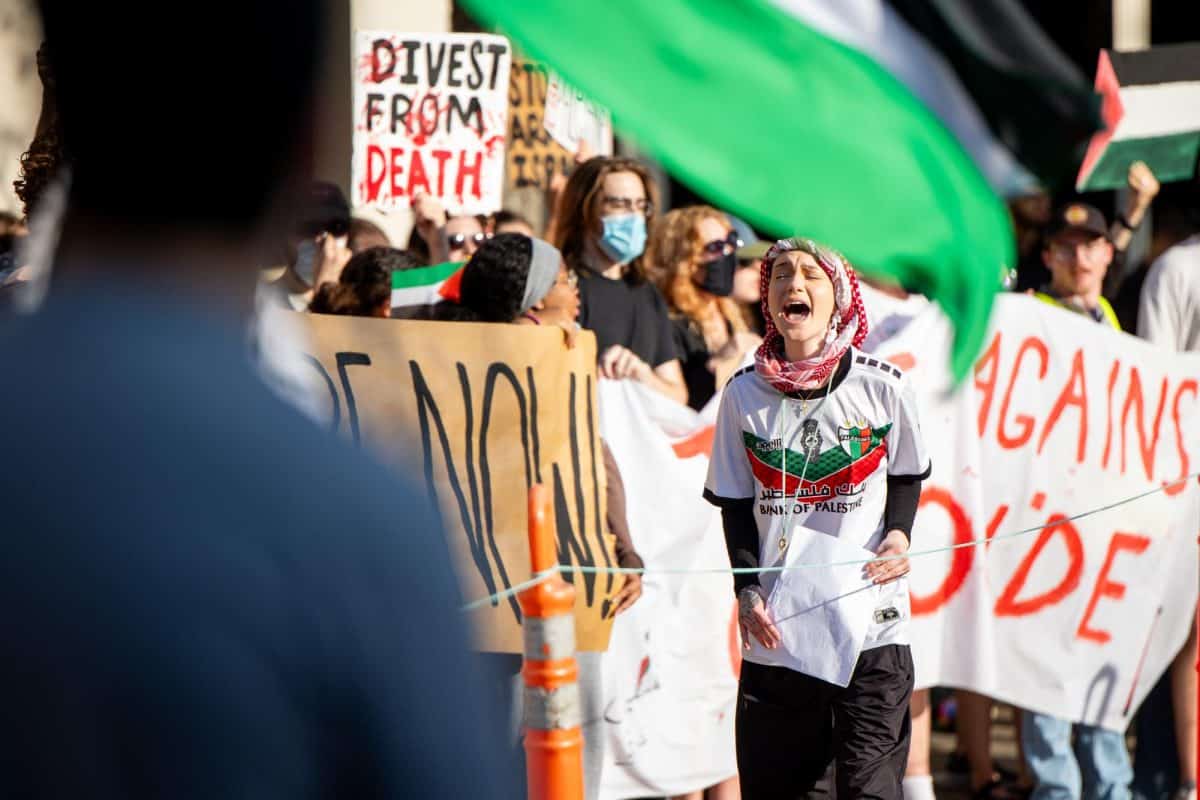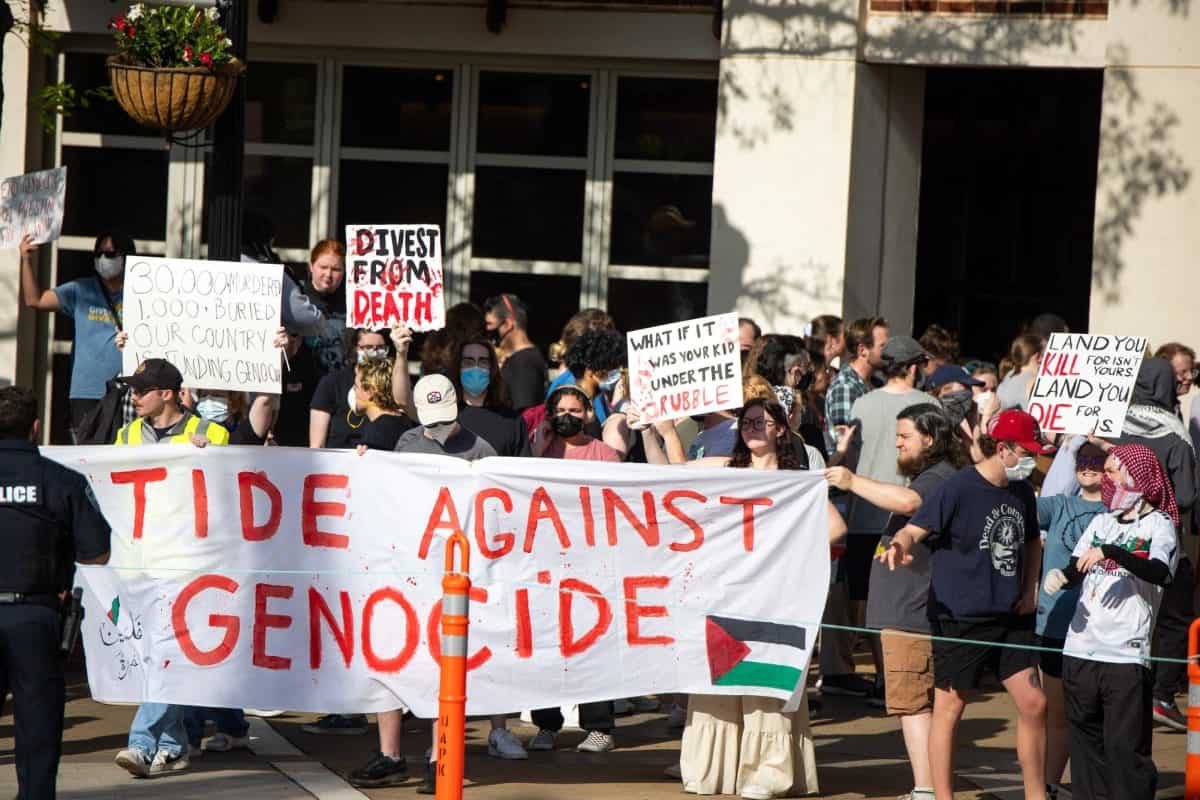For Ashley Swafford, working on a documentary of Hurricane Sandy with her telecommunication and film professor, Chandra Clark, turned out to be more personal than she could have imagined.
Swafford said it hit her when their crew stopped by a donation center in New Jersey, where people could donate food and clothes, to interview a radio personality about his role in the disaster.
“I was already feeling an overwhelming sense of sadness, as the drive reminded me of all that we lost a few Aprils ago,” Swafford said. “It was an outside interview, so I was holding a huge reflector up to redirect the sunlight onto our interviewee. So you couldn’t see my face, and I couldn’t see his.”
Swafford said he was positive and upbeat when talking about the drive they were doing and why they were doing it.
“Scott asked the person, ‘Did you have any damages to your home?’ and then the guy froze, not saying a word,” Swafford said. “I’m behind this huge reflector, biting my cheek, because I knew exactly what he was going to say.”
Swafford said he started sobbing, explaining that he hasn’t been to his home yet, because he wasn’t allowed and that today would be the first time he’d see it since Hurricane Sandy hit.
“His story was upsetting to me because it is our story,” Swafford said. “We lost our friends like they lost theirs. We lost our home like they just lost theirs. Dr. Clark and I tried to show them that there is hope. There is recovery, and the same compassion that was shown to us in our time of need is being shown right now, right here, at this drive.”
Swafford, a senior majoring in telecommunication and film, traveled with Clark and Scott Hodgson, a professor from the University of Oklahoma, to cover Hurricane Sandy.
After receiving praise for several of their mini-documentaries on the Tuscaloosa and Joplin, Mo., tornadoes, Clark and her partner and director, Hodgson, were asked to film a similar documentary on Hurricane Sandy.
Clark’s personal story in covering natural disasters initiated when her church was destroyed in the April 27, 2011 tornado.
“I understood covering disasters, but I had never had so many friends and my church family impacted by it,” Clark said. “So many people came to help us following the tornado that I turned around and worked disaster relief until the BEA and NAB teamed Scott Hodgson and I together in July 2011, following the Tuscaloosa and Joplin tornadoes.”
Clark said she hoped to find a way to use her broadcast and journalism skills to show how broadcasters did their jobs and did them well during those tornadoes.
“The first project on the tornadoes found me as I was starting my job at Alabama,” Clark said. “Since then, I have also worked with my college ministry at my church and traveled to help with disaster relief from flooding LaPlace, La., in October, following Hurricane Isaac, and Hattiesburg, Miss., following the F4 tornado that hit there in March.”
Clark and Hodgson focused this documentary on the role of media in the aftermath of Superstorm Sandy by traveling to five different states.
As far as focusing on the roles of media, Clark said she is “a producer by trade.”
“I’ve lived in a newsroom since I was 16 years old, and most people do not realize the financial and time commitment that broadcasters make toward covering a disaster,” Clark said. “It’s a community service, and there’s no one who does it better than radio and television journalists.”
Clark said they are the ones responsible for providing the visuals and the sounds for the warnings, the emergency responders, the officials and the people going through the disasters.
“They are the eyes and the ears so that we do not have to go out in the weather,” Clark said. “We depend on them for our daily news and weather updates, but in a natural disaster, they are our lifelines, not only through a radio or television signal but also on social media.”
Clark and Hodgson traveled to five states in seven days and conducted 33 interviews.
“It was amazing to talk to news directors and managers in major market stations that knew nothing about me but welcomed our crew of two professors and three students with open arms,” Clark said.
Clark and her partner learned that communication through television and radio is a major player during disasters.
“While social media is a wonderful tool, when the power is out and your batteries die on your phones, you can still listen to the radio in your car and television stations are still on the air, and that’s where people tune to for the critical information they need,” Clark said. “Those television and radio stations not only broadcast, they are putting out life-saving information for the survivors plus helping get the word out to people around the country to know how they can help their neighbors in need.”
Swafford said she was grateful Clark was an excellent scheduler.
“She managed to secure interviews with over 20 people in five days, including Brian Williams and Governor Chris Christie,” Swafford said. “She actually managed to sweet-talk us right into both of those. Thank the Lord for Southern accents.”
Swafford said her favorite experience from this documentary was meeting Scott Hodgson, Zach Strauss and Josh Shockley from the University of Missouri.
“Those three, Dr. Clark and myself were tied together for about 19 hours a day for five days,” Swafford said.
In addition to the crew, the people’s stories during the interviews were inspiring for Swafford.
“I heard some amazing stories that brought back many painful but resounding memories that we have all shared here together during the Tuscaloosa tornado,” Swafford said.
Swafford said it was rewarding to be able to witness the power of the human spirit.
“In times when there is total darkness and our neighbors have fallen down, people show up,” Swafford said. “People reach out their hands and lift us back up, because that’s how we are. I think life moves too fast most of the time, but big disasters slow it down and make us realize what really matters.”






